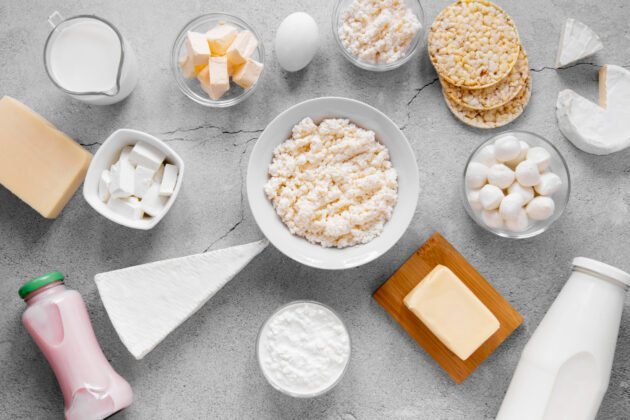
Table of Contents
Table of Contents
- A Brief Overview of Dairy Ingredients
- Why Integrating Dairy Ingredients Matters
- Unveiling Lesser-Known Dairy Ingredients
- Nutritional Benefits You Shouldn’t Overlook
- How These Ingredients Stack Up Against Alternatives
- Sustainability and Economic Impact
A Brief Overview of Dairy Ingredients
Dairy has long been a vital part of human diets, cherished for its palatability and comprehensive nutritional benefits. For centuries, cultures worldwide have relied on dairy in various forms, using milk to create everything from cheese and yogurt to butter. However, delving deeper into dairy ingredients reveals a wealth of specialized components poised to revolutionize culinary pursuits and nutritional strategies. Specialized dairy ingredients—often overlooked by the average consumer—offer unique properties that enhance food’s flavor, texture, and nutritional profile.
Recent advancements in technological processes and an increasing body of nutritional science are shedding light on these underutilized elements. Processes once reserved for industrial food production are gradually making their way into professional kitchens and homes, encouraging individuals to consider the vast potential of dairy beyond the conventional.
Why Integrating Dairy Ingredients Matters
Understanding and incorporating a broad spectrum of dairy ingredients into the kitchen can significantly elevate meal quality and nutritional value. The well-known trio of cheese, milk, and butter only scratches the surface of the many benefits of dairy products. Specialized dairy nutrients, such as probiotics and essential vitamins, can act as critical enhancers in recipes, providing complexity and richness that regular ingredients cannot achieve. For those passionate about cooking, these ingredients offer a chance to experiment with different flavors and textures, turning everyday meals into culinary delights.
Industrial food producers’ comprehensive knowledge of these ingredients allows them to create products that taste exceptional and meet the growing consumer demand for healthy and innovative food options. By using specific dairy components, manufacturers can tailor products to offer increased nutritional benefits, fitting perfectly within a market increasingly oriented towards health and well-being without compromising taste or eating experience.
Unveiling Lesser-Known Dairy Ingredients
Beyond the commonly recognized dairy components lies a treasure chest of lesser-known ingredients that can dramatically alter the outcome of culinary creations. Milk proteins, such as casein and whey, offer more than just nutritional perks—they are functional powerhouse elements. Casein, for instance, can stabilize emulsions and retain moisture, making it ideal for creating creamy dishes like soups and sauces that maintain consistency even under varying cooking conditions.
Whey proteins, frequently celebrated in the fitness community for their muscle-repairing qualities, also shine in food manufacturing, enhancing the texture and nutritional profile of baked goods and beverages. Meanwhile, permeate—a by-product of whey—is often discarded but holds potential as a natural sweetener and sodium reducer. Integrating permeate as an ingredient can appeal to health-conscious consumers looking to reduce sugar and salt intake without sacrificing taste.
Nutritional Benefits You Shouldn’t Overlook
Regarding the nutritional benefits of lesser-known dairy ingredients, there’s an impressive list of advantages extending beyond straightforward protein content. For example, whey protein is packed with vital amino acids for muscle development and recovery and includes elements promoting metabolic well-being. It is popular with athletes and valuable for people wanting to boost their protein intake, no matter their level of fitness.
On the other hand, Casein offers a slow-releasing protein source, providing sustained energy and promoting satiety, which can assist in weight management and prolong meal satisfaction. Furthermore, components derived from lactose have shown the potential to enhance gut health by acting as prebiotics that foster beneficial bacterial growth. This makes these ingredients a valuable addition for those seeking to improve digestive health alongside nutritional intake.
How These Ingredients Stack Up Against Alternatives
The debate between traditional dairy and plant-based alternatives continues to shape dietary choices worldwide. While plant-based ingredients undoubtedly have their benefits, particularly for those with dietary restrictions, dairy ingredients often boast nutrient density and bioavailability advantages. For instance, the protein found in dairy is admired for being complete, containing all the essential amino acids in ratios beneficial to humans, unlike many plant-based proteins that require complementary sources.
Dairy ingredients also have a long-standing reputation for contributing desirable sensory properties to foods, such as creaminess and smoothness, which are sometimes more challenging to replicate with plant-based options. While some individuals may choose plant-based products for ethical or allergenic reasons, unrestricted people should pay attention to dairy’s well-rounded potential in delightfully and effectively meeting nutritional needs.
Sustainability and Economic Impact
The dairy industry is no exception, as sustainable practices gain momentum across all production sectors. By finding innovative applications for by-products like whey and permeate, the industry reduces waste and maximizes resource efficiency. These efforts contribute positively to the environment, helping to uphold ecosystems dependent upon sustainable agricultural practices.
The economic implications are also far-reaching, as turning by-products into valuable ingredients supports local dairy farmers and producers, contributing to regional economies. By integrating these ingredients effectively, the dairy industry can support a more sustainable global food system and bolster food security—demonstrating these ingredients’ vital role in nutrition and a broader socioeconomic context.
